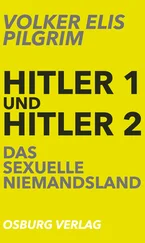See note 296 296 Hans Frank (23.5.1903–16.10.1945) from 12.10.1939 General Governor of Poland. Housden, ‘Hans Frank’.
above.
See note 297 297 SS-Obergruppenführer Wilhelm Koppe (15.6.1896–2.7.1975) HSSPF (Higher SS Police Chief). For the wrangling over jurisdiction between Hans Frank and the HSSPF in Poland see Birn, ‘Die Höheren SS und Polizeiführer’, pp. 197–206.
above.
Here meaning SS-Gruppenführer and Generalleutnant der Polizei Paul Hennicke (31.1.1883–25.7.1967), Police President of Weimar, April 1938 – October 1942. No details are known regarding the murder of civilian convicts by the SD.
See also Document 119.
Rothkirch had been at HQ, Commdg Gen. Security Forces, Army Group Centre, since 8.10.1943 and was appointed Cdr, White Russia. Following a positive appraisal by Feldmarschall Busch he was promoted to General der Kavallerie on 1.1.1944.
Up to January 1942 in Lvov alone about 11,000 Jews were killed. For the extermination of Jews in the Eastern Galician region of Oberfeldkommandantur 365 see Pohl, ‘National-Sozialistische Judenverfolgung’. In this post, Rothkirch apparently had a rather reserved attitude towards the SS. Alongside the civilian administration and the SS apparatus within the General-Gouvernement, as Wehrmacht representative Rothkirch had only a subordinate role in the region. Ibid., p. 93. For the role of the Oberfeldkommandantur see Krannhals, ‘Die Judenvernichtung in Polen’.
In July and August at Zhitomir, 5,000 Jews were murdered. Those not caught up in the first massacres were killed on 18 September 1941 when 3,145 Jews were executed 10 kilometres outside the city. Broich was probably referring to this occurrence. Why he came to Zhitomir as CO, Reiter-Reg.22./1.Kav.Div. subordinated to Pz.Gr.2, Army Group Centre, is not known. Between 12 and 20.9.1941 while the division was out of the line to rest and repair, Broich apparently took the opportunity to visit Zhitomir. War Diary, 1.Kav.Div., BA/MA RH29/1-4. There is no trace of an Oberst von Monich in the Army List.
Choltitz flew to Berlin on 4.7.1942 to deliver a radio broadcast on the fighting at Sevastopol; a facsimile of the speech is published by Timo von Choltitz at www.choltitz.de. The Chief of Staff referred to here is Oberst Freidrich Schulz (15.10.1897–30.11.1976) who was Chief of Staff, 11.Armee between 12.5.1942 and 27.11.1942. In his memoirs, Choltitz did not mention the shooting of Jews in the vicinity of Simferopol airfield. Choltitz, ‘Soldat unter Soldaten’, p. 217. A total of about 40,000 Jews and Crimean hussars were murdered in the Crimea. ‘Enzyklopädie des Holocaust’, Vol. 2, p. 822.
See Document 133 and note 329 329 Wildermuth refers here to the massacre at Kralievo in the nine days from 15.10.1941, in which 4,000 to 5,000 civilians were shot dead as a reprisal by units of 717.Inf.Div. After the town was attacked by Chetniks on 5.10.1941, the Dornier aircraft factory was closed the following day for the alleged unreliability of the workforce. These employees were then held in a workshop of railway coachmakers together with workshop and railroad staff. On 11.10.1941 the Chetniks launched a second attack on Kralievo that lasted until 16.10.1941. The attacks had had artillery support while Wehrmacht troops came under fire from the civilian population. On 15 and 16.10.1941 between 300 and 1,755 hostages were shot, including the Dornier employees. That a German factory supervisor was shot as a hostage is not confirmed by the archive. The Kralievo district commandant, Oberleutnant Alfons Matziowicz, had issued an instruction on 15.10.1941 that 100 Serbs were to be shot for every dead German. This was authorised under Keitel’s order of 16.9.1941 that the death of a German was to be expiated by the killing of 50 to 100 Serbs; OKW War Diary, Vol. 1, p. 1068. There is scarcely any evidence of Wildermuth’s involvement in the shootings. The 717.Inf.Div. files do not indicate when and on whose orders any particular batch of hostages were shot, although most were carried out by elements of Inf.Reg.749 under Major Desch, senior officer at Kralievo. This unit was guilty of other massacres in the Kralievo area after 16.10.1941. The activity report of Wildermuth’s Inf.Reg.737 for September 1941 does prove, however, that atrocities were committed in his direct area of jurisdiction before the October incident. The report states, ‘140 to 150 enemy dead, 6 wounded, 92 prisoners, 32 prisoners shot , 98 houses, 8 dwellings, 2 villages set alight and destroyed. 39 own forces killed, 47 wounded.’ BA/MA RH26-117/3. The Commdg Gen. Serbia, Franz Böhme (15.4.1885–29.5.1947) expressed harsh criticism at the unleashing of reprisals. ‘The shooting of our agents, Croats and the workforce of German armaments factories are errors that cannot be made good.’ Plenipotentiary Commdg Gen. Serbia, Chief Mil. V./QuNo 3208/41. 25.10.1941 BA/MA RH26/342-14. In Wildermuth’s comprehensive fund of documents the only mention of hostages being shot is a diary entry for 18.10.1941, ‘Kralievo has become a dead city. The viciousness of our reprisals was fearsome’, BA/MA NL251-100. His biographer does not speak of the events at Kralievo. Kohlhaas, ‘Eberhard Wildermuth’, p. 99f. See also Manoschek, ‘Serbien ist judenfrei’, pp. 155–8. A concise arrangement of the crimes in the context of the partisan war appears in Schmider, ‘Auf Umwegen zum Vernichtungskrieg?’.
below.
Karl Röver (12.2.1889–15.5.1942) was Gauleiter of Weser-Ems from 1.10.1928 until his unexpected death.
For the general context see Heuzeroth, ‘Verfolgte aus religiösen Gründen’ and Pohlschneider, ‘Der NS-Kirchenkampf in Oldenburg’.
The Janovska camp was at Lvov. It had no gas chambers but estimates range from 10,000 to 200,000 persons murdered there. ‘Enzyklopädie des Holocaust’, Vol. 2, p. 657ff. The nearest gas chambers were at Belzec camp, about 70 kilometres north-west of Lvov, where 600,000 Jews, Gypsies and Poles were murdered between mid-March and December 1942. For the murder of Jews in Galicia see Sandkühler, ‘Endlösung in Galizien’.
What knowledge Ramcke had of the Holocaust can no longer be ascertained. Since he spent only four weeks from February 1944 on the Eastern Front in Ukraine it is possible that he knew little of it.
Dr Karl Lasch (29.12.1904–3.6.1942), Governor, Galicia district of General-Gouvernement with his seat at Lvov, 1.8.1941–24.1.1942. Lasch was recalled peremptorily on 14.1.1942 and executed on 3.6.1942 for corruption. For Lasch see Sandkühler, ‘Endlösung in Galizien’, esp. p. 447f; and Pohl, ‘NS-Judenverfolgung’ esp. p. 76f.
Rothkirch also mentions this in SRGG 1133(C), 9.3.1945, TNA, WO 208/4169. Under the cover name ‘Aktion 1005’ from June 1943 the SS began removing the evidence of mass murders in the East by opening the graves and burning the corpses. Spector, ‘Aktion 1005’.
At Kutno, captured by German troops on 15.9.1939, the Jewish population was corralled into a ghetto in June 1940 where they lived under the most appalling circumstances. During March and April 1942 the ghetto was gradually emptied, the inhabitants being taken to Kulmhof camp for extermination. Nothing is known of the mass shootings of Jews at Kutno.
Читать дальше


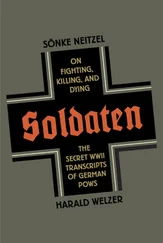

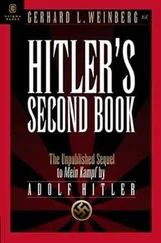
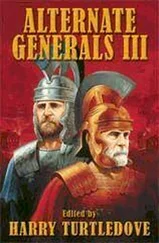
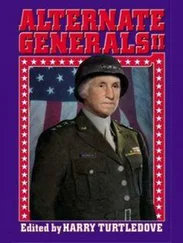

![Traudl Junge - Hitler's Last Secretary - A Firsthand Account of Life with Hitler [aka Until the Final Hour]](/books/416681/traudl-junge-hitler-s-last-secretary-a-firsthand-thumb.webp)

